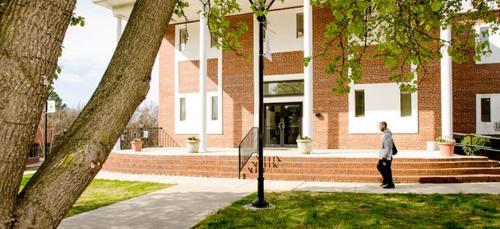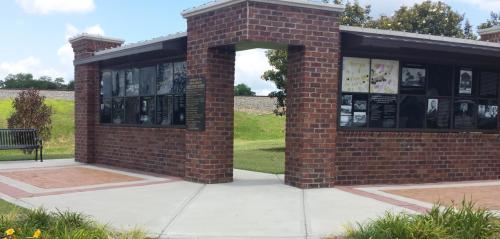York County is home to rich African American history. From lessons from the enslaved at Historic Brattonsville to learning about the birth of the “Jail, No Bail” movement – York County's history isn’t complete without the significant contributions of the county's African American citizens. Discover these sites across York County that help you connect to the inspiring individuals who helped fight for freedom and shape our history. You can learn more about many of these sites through the Green Book of South Carolina, a mobile travel guide to African American cultural sites across South Carolina.
Schools:
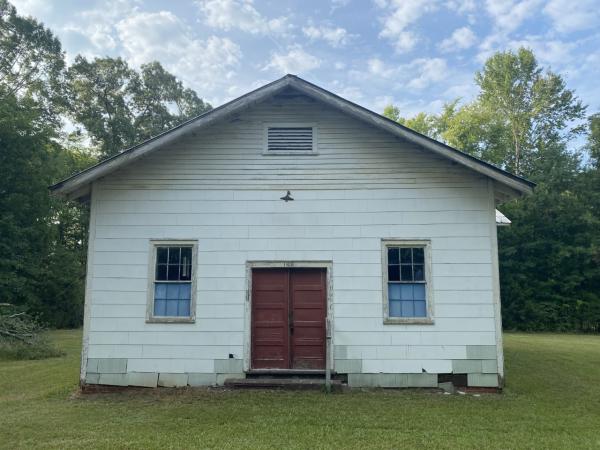
Rosenwald Schools
Rosenwald Schools were started in the early 1900s to create schools that could provide quality education to African American children, primarily in the South. The program was founded by Booker T. Washington and Julius Rosenwald, president of Sears Roebuck & Company. From 1912 to 1932, nearly 5,000 schools were built. In recent years, many organizations in York County have worked to identify buildings and properties of at least the 22 known Rosenwald Schools in York County. While three are still standing, four have historical marker designation, Liberty Hill at 3071 S. Anderson Rd, Catawba. The Carroll School at 4789 Mobley Store Rd, Rock Hill; St. James School at 1108 Hickory Street Hickory Grove, and the George Fish School Marker at 401 Steele St, Fort Mill.
St. Anne’s Parochial School
This historic marker narrates the story of the first Catholic church in York County and the first school in S.C. to integrate. Founded in 1919 by the Rev. William A. Tobin of Columbia, St. Anne’s was originally built on Saluda Street in 1920 but closed in 1961. St. Anne’s opened its first parochial school in the church rectory in 1951. In 1954, St. Anne’s became the first school in S.C. to integrate when it enrolled five students from St. Mary’s, the predominantly African American Catholic church in Rock Hill. A new St. Anne’s School opened here in 1956.
Emmett Scott
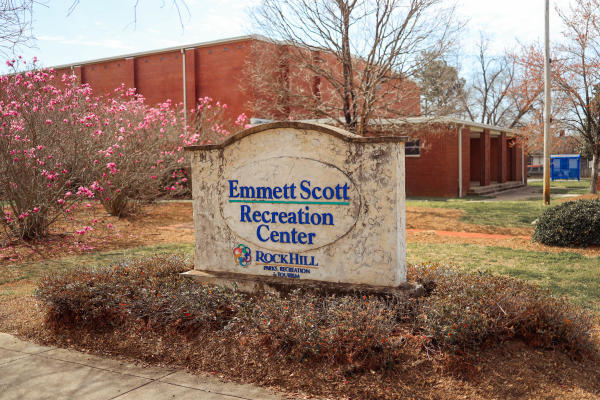
This school, founded in 1920, was the first public school in Rock Hill. Named for Emmett J. Scott (1873 – 1957), a prominent educator who was then secretary of Howard University, Emmett Scott School included all 12 grades until 1956 and was a junior high and high school from 1956 until South Carolina schools were desegregated in 1970. The original two-story frame school was demolished in 1952. The City of Rock Hill owns this property and has been a neighborhood recreation center since the school closed in 1970.
Clinton College
Clinton College is York County’s only open historically black college. Founded in 1894, it was originally founded as Clinton Institute. Clinton College continues to offer an academic environment that promotes intellectual growth and fosters men and women to be lifelong learners and good stewards of society.
Friendship Junior College
Friendship Normal and Industrial Institute was founded in 1891 by Dr. Masel Phillip Hall and established as a Baptist school for African-American students. It later evolved into Friendship College and was a hub for student involvement in the Civil Rights Movement under their longtime President, Dr. James Goudlock. The school was closed in 1981 and later torn down. The sign and fencing for the property still remain.
Exhibits and Museums:
Historic Brattonsville
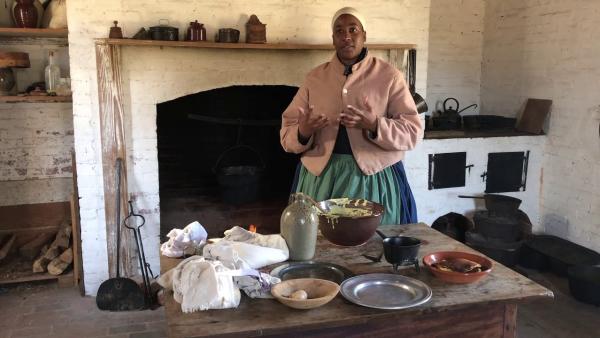
Historic Brattonsville presents the history of the Scots-Irish and African Americans in the South Carolina upcountry largely through preserving and interpreting the story of the Bratton community. This site has more than 30 historic structures from the 1760s to the late 19th century, including an original brick slave cabin. This site celebrates the rich heritage of African Americans in annual programming such as "By Way of the Back Door" and “By the Sweat of Our Brows.” During these programs, visitors have the opportunity to learn about the enslaved community of Brattonsville and meet and hear from descendants of those once enslaved here.
African American Business District Monument
At the corner of Black Street and Dave Lyle Boulevard in Downtown Rock Hill is a monument that marks where the African-American Business District was. The monument pays tribute to the Business District that served the African-American community until it was demolished in the 1970s as part of the Urban Renewal program.
Freedom Walkway

Just off Main Street, you’ll find an alleyway filled with a colorful mural and a unique bricked path. The Freedom Walkway celebrates the striving of the people of Rock Hill to achieve the promise of Liberty and Justice for All. Pieces of the mural and walkway represent different pieces of Rock Hill’s history for African Americans. The walkway includes informational panels about civil rights history and local justice seekers.
Jail, No Bail Exhibit: How 30 Days Impacted the Civil Rights Movement

Jail, No Bail: How 30 Days Impacted the Civil Rights Movement captures the unique role their protest played in the 1960s civil rights movement. Later dubbed the Friendship Nine because most were students at nearby Friendship College, this group of men bravely joined national activists to protest segregation and oppression prevalent in Rock Hill and throughout the United States. Through original letters, newspaper articles, images, and video, this exhibition tells the story of a group of individuals who altered the course of civil rights together. Hours: Tuesday - Friday, 10 am - 4 pm; Saturday - Sunday, 11 am - 4 pm. While you're there, visit the original lunch counter and metal stools that remain in the former McCrory's Five & Dime space. Kounter celebrates the work of Friendship 9. Inside, you'll find the restored original lunch counter and stools and the names of the Friendship 9 etched into the wall.
Paradise Community Exhibit at the Fort Mill History Museum
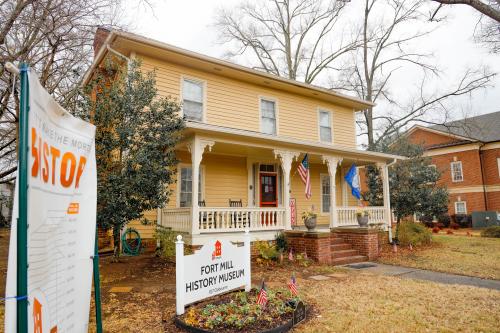
Paradise is the African American community of Fort Mill, established in 1895, where former slaves settled and became teachers, masons, merchants, and entrepreneurs. The community's educational and social centerpiece was George Fish School, which opened in 1925 as the town’s all-black public school. Additional information regarding the Paradise Community can be found in the J.B. Mills gallery of the Fort Mill History Museum. The museum, free to the public, tells the story of Fort Mill’s rich history and is in downtown Fort Mill at 107 Clebourne Street.
Historic Sites:
Fishing Creek Place Cemetery
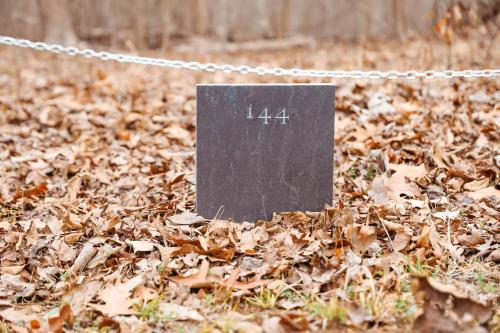
Two years ago, a single grave site was discovered on private property in York County. With the help of archaeologists, property owners discovered 144 gravesites believed to be those of enslaved Africans. The cemetery property, protected by a conservation easement with Nation Ford Land Trust, will never be developed. This cemetery is on private property and is not currently open to the public. For inquiries, please email Andrew Lazenby.
Afro-American Insurance Company
With offices in several Southeastern states, Afro-American was one of several insurance companies that catered to black customers. The Rock Hill building, erected in 1909, is evidence of a growing need for professional services among an emerging African American middle class. Several Black-owned businesses also called this site home, including a restaurant, grocery store, and seafood shop.
Allison Creek Presbyterian Church and Clay Hill Graveyard
This church was founded in 1854 by residents of the Clay Hill community on Allison Creek, who were members of Bethel (1769) and Ebenezer (c. 1785) Presbyterian churches. They built this church on land donated by J.D. Currence. Rev. J.R. Baird, the first pastor here, served until 1866. A graveyard just east of the church cemetery was begun in the 1850s for both slave and free black members. Used until c. 1896, it contains about 300 graves, 14 with engraved stones and the rest marked by fieldstones or unmarked. After 1865, black members of Allison Creek left to form Union Baptist (1892), Liberty Hill AME Zion (1896), and New Home AME Zion (1897).
Carver Theater
This Main Street theater was opened by Jessie Cox in 1947 and served as the first movie theater for African Americans in Rock Hill. The theater had nearly 500 people and was later turned into a pool hall. The building closed its doors in the 1970s.
Dori Sanders Peach Farm
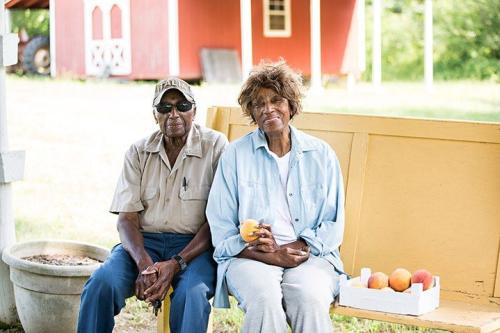
Renowned author and farmer Dori Sanders can often be found at her Peach Farm Stand in Filbert. Her family operates one of the oldest African-American farms in the region. Her father, a former sharecropper, bought the land around 1915. The farm produces fruits and vegetables and specializes in growing Georgia Bells and Elberta peaches sold at an old roadside stand.
Hermon Presbyterian Church
This church was organized in 1869 with Rev. J.A. Rainey as its first pastor. It is one of the oldest institutions in Rock Hill. With support from Northern Presbyterians, it ran a private school as early as the 1880s and was a mission church until 1912. This Gothic Revival sanctuary, built by church members who were also brick masons and carpenters, was built between 1897 and 1903.
Hermon Presbyterian features a three-story tower and pointed-arch and quatrefoil stained-glass windows. The congregation was central to the local Civil Rights Movement during the 1950s and 1960s. Hermon Presbyterian Church was listed on the National Register of Historic Places in 1992 after the congregation moved to a new church 1 mile away. SW on Heckle Blvd. in 1999, this historic church became a community center.
Mount Prospect Baptist Church
This church was founded in 1883 and formally organized as First Baptist Church, Colored, in 1885. It was later renamed Mt. Prospect Baptist Church. In 1891, Mount Prospect hosted the first classes of Friendship College, founded by Rev. M.P. Hall to offer an education to Rock Hill blacks before there was a public school for them. The school held classes here until 1910. The second church burned in 1914, and this brick church, with Romanesque Revival elements, was built in 1915. It was listed in the National Register of Historic Places in 1992.
New Mount Olivet AME Zion Church
Organized in 1873, this church has a rich history of justice and equality. First called Mt. Olivet Methodist Zion Church. This brick church was built 1923-27 under Revs. J.D. Virgil and C.L. Flowers. The church was renamed New Mount Olivet AME Zion Church in 1937. In May 1961, this church hosted a mass meeting to honor and support the Freedom Riders when an interracial group sponsored by the Congress of Racial Equality launched the first Freedom Rides from Washington to New Orleans. The first violent opposition in the South occurred in the bus station in Rock Hill.
Sadler Store
This brick-veneered, wood-framed building was built in 1927 as a country store and opened by Williams Sadler. An African American businessman, Sadler had managed farmland and another store in McConnells, S.C., before opening the Sadler Store here on the outskirts of York in one of the town’s predominantly black neighborhoods. The adjacent one-story house was built simultaneously as the store and served as Sadler’s second family home. Upon Sadler’s death, his daughter Mary “Mamie” Sadler Crawford took over the store until the 1960s. She renamed it “Crawford’s” and added a lunch counter. It was one of York’s only black-owned businesses and a well-known gathering place for local African Americans and those traveling between Charlotte and Columbia. Crawford’s daughter, Mae Crawford Williams, kept the store open until 1997. Listed in the National Register of Historic Places in 2017.
